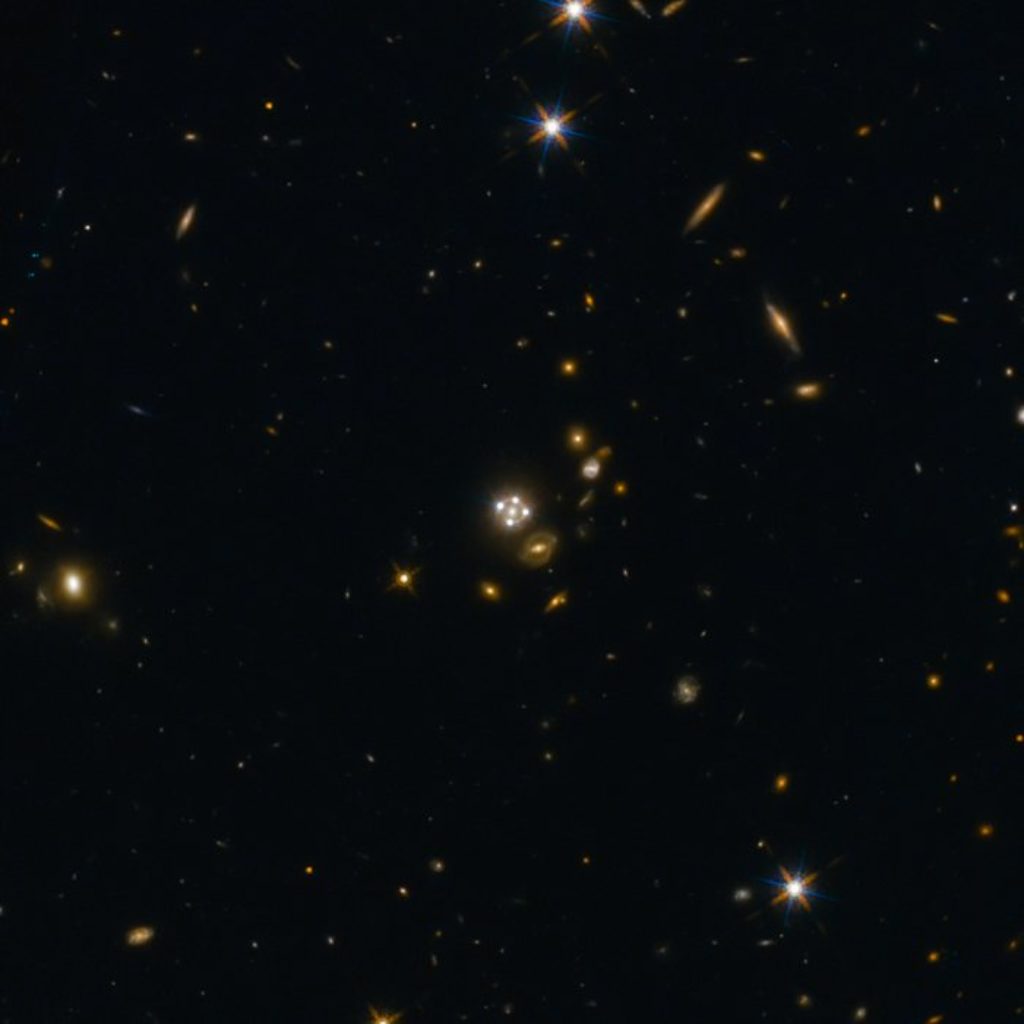The universe is expanding faster than previously thought. The scientists have suggested the universe’s expansion rate, known as the Hubble Constant, at about 44.7 miles (72 km) per second per megaparsec. (A megaparsec is about 3.26 million light-years.). These new measurements may be pointing towards new physics beyond the standard cosmological model.
A group of astronomers from the H0LiCOW collaboration, led by Sherry Suyu, Max Planck professor at the Technical University Munich (TUM) and the Max Planck Institute for Astrophysics in Garching, Germany, used the NASA/ESA Hubble Space Telescope and other space telescopes and ground-based telescopes to observe 5 quasars, to arrive at an independent measurement of the Hubble constant.
The Hubble Constant – measurement unit of the universe’s expansion
Hubble Constant, named after American astronomer Edwin Hubble indicates how fast the universe is expanding. It is one of the fundamental quantities describing our universe.
In the late 1920’s, Hubble was observing and studying galaxies. He noticed that galaxies furthest from the Earth are moving faster. Actually, he was observing the expansion of the universe.
Hubble Constant has been constantly refined over the years with the advancement of more sensitive measurement tools and telescopes. Hubble telescope is one of those tools.
In 2015, the ESA Planck Satellite measured the constant with the highest precision so far and obtained a value of 66.93±0.62 km per second per Megaparsec. In 2016 scientists using Hubble measured a value of 73.24±1.74 km per second per Megaparsec.
And now H0LiCOW team determined a value for the Hubble constant of 71.9±2.7 km per second per Megaparsec.
The usual points of references are Cepheid variable stars and supernovae. But, Suyu and her team have used a different approach.
Quasar: the new point of reference in measuring universe’s expansion
H0LiCOW explains they have got the Hubble Constant from the blind analysis of three multiply imaged quasar systems through strong gravitational lensing. Gravitational lensing is cosmic phenomenon whereby the enormous mass of galaxies bends spacetime, creating multiple images of background objects. Gravitational lensing is explained in the video bellow. (Video credits: ESA/Hubble, NASA)
However, the different results of observing the universe expansion could be a clue. “The expansion rate of the Universe is now starting to be measured in different ways with such high precision that actual discrepancies may possibly point towards new physics beyond our current knowledge of the Universe,” explains Suyu.
The differences in the Hubble constant estimates may reflect something that astronomers don’t understand about the early universe or something that has changed since that long-ago epoch, scientists have said.
